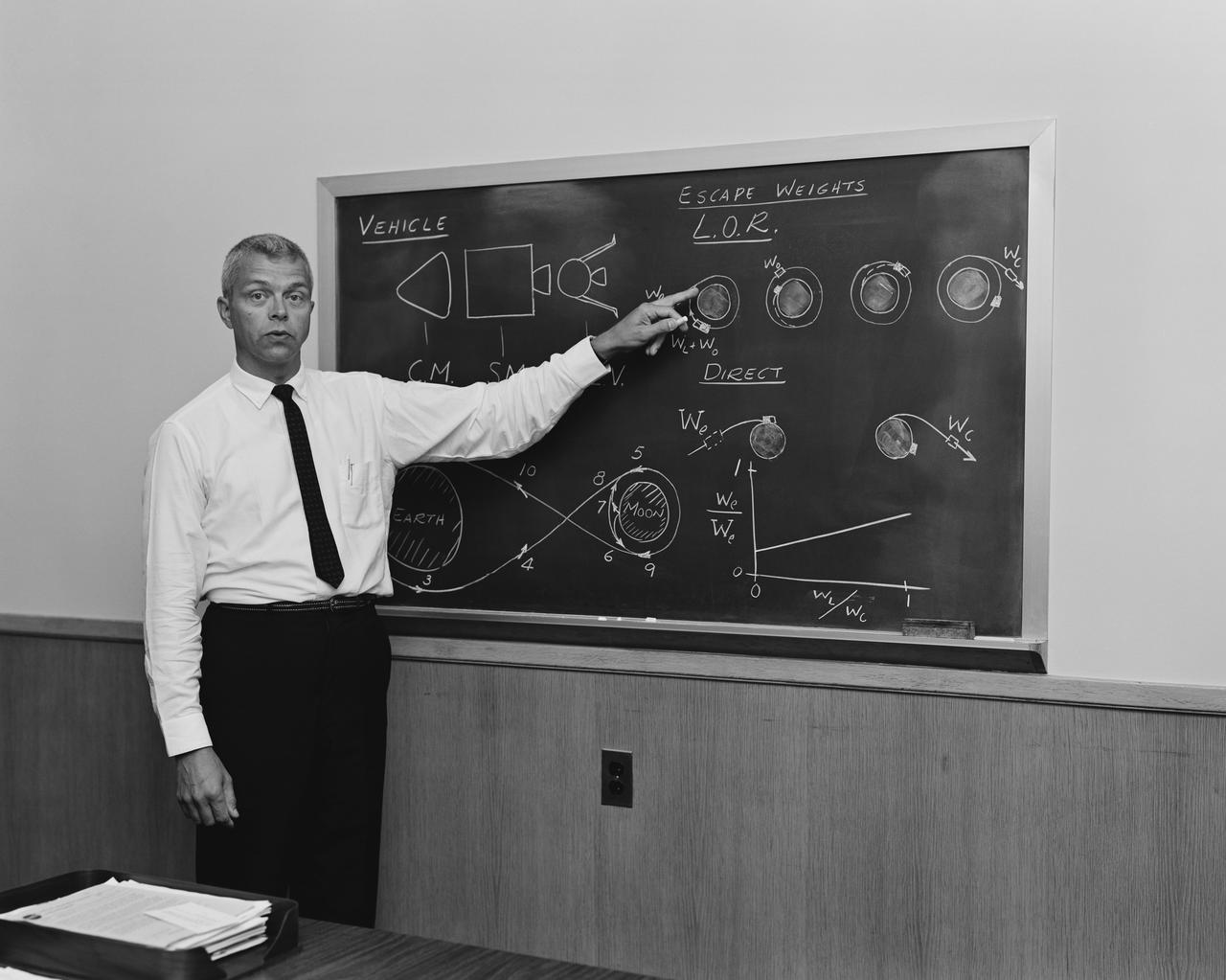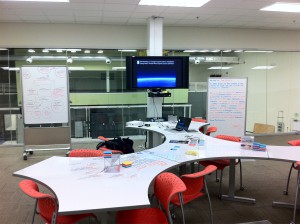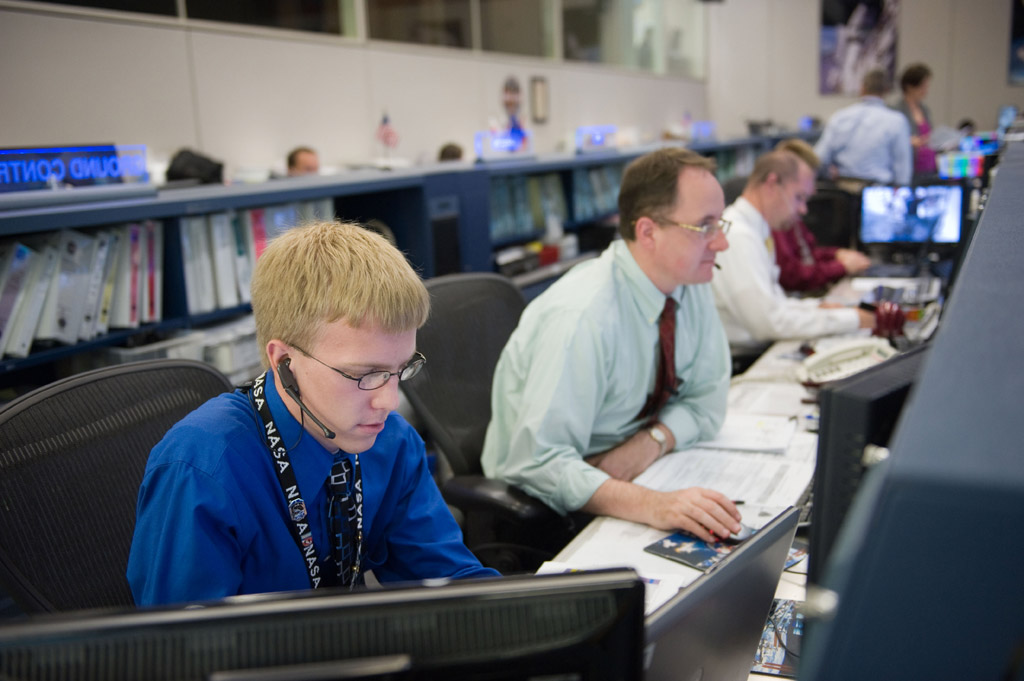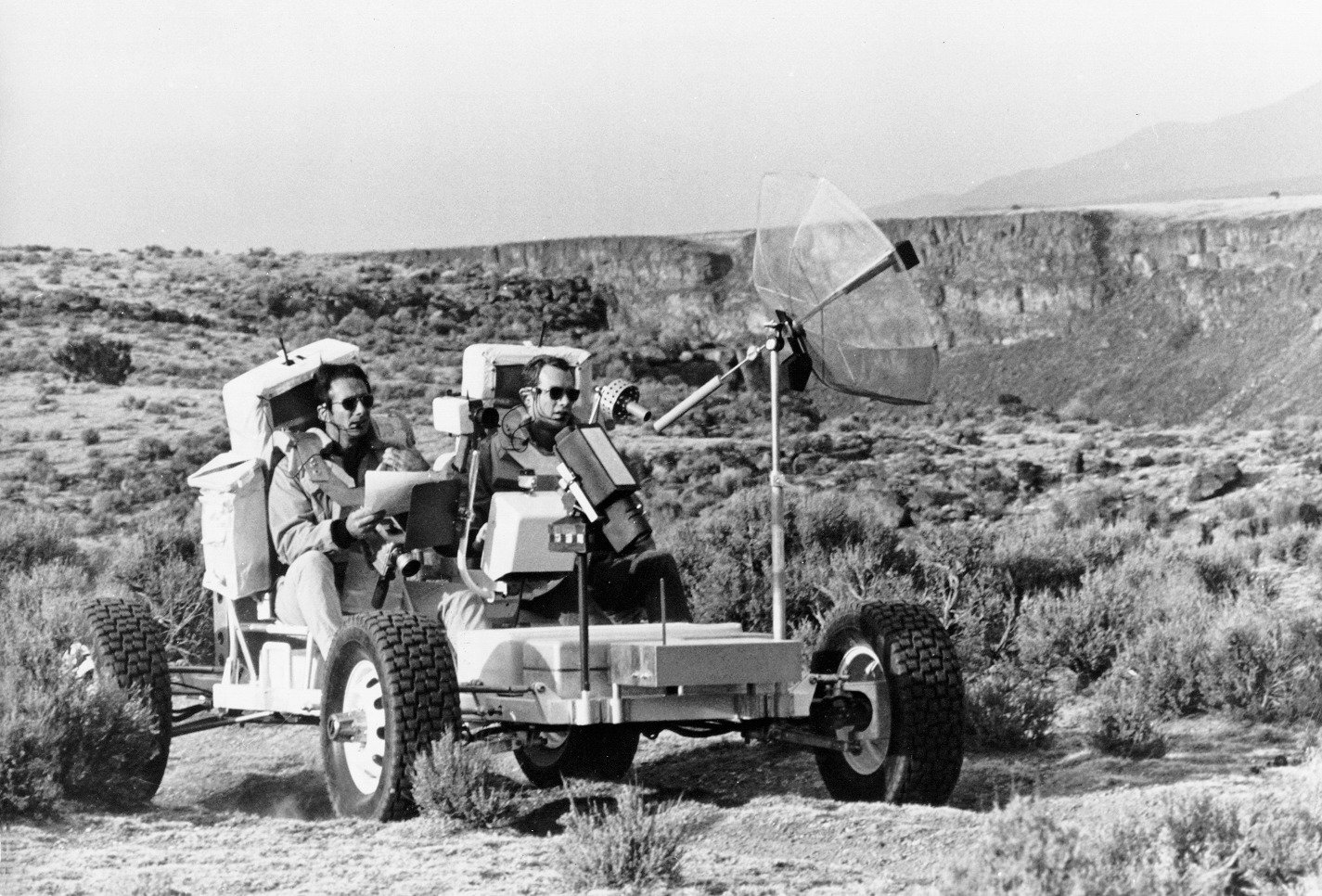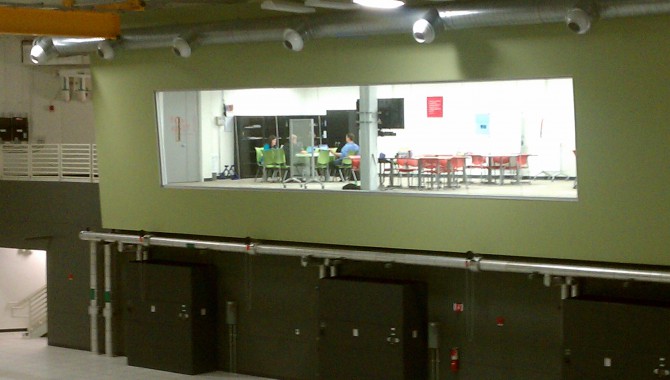
The "sp.ace." inside one of the high bays of Building 29 overlooking the former home of the Weightless Environment Training Facility (WETF) is a work area available to everyone at the center. Credit: NASA
July 20, 2011 Vol. 4, Issue 5
What impact does a room really have on your work?
Ask someone where to find “the sp.ace” at Johnson Space Center (JSC) and they might look at you as though you’ve queried the location of Platform 9 ¾ or a wardrobe leading to Narnia. Between Buildings 34 and 585 at JSC sits Building 29. It once housed the Apollo astronaut centrifuge, and later the Weightless Environment Training Facility (WETF)—a precursor to the Neutral Buoyancy Laboratory—which trained astronauts for Hubble repair missions. Today Building 29 supports another mission: collaboration.
Inside one of the high bays overlooking the former home of the WETF is a work area available to everyone at the center. The decor is simple and functional: whiteboard tables, colorful rolling chairs, mobile desks and whiteboard walls. Have an idea? Write it on the table or a wall. Share it on a screen. Need a bit of privacy? Go to the neighboring room (“the fishbowl”) and work there.
Open, light, and flat, the sp.ace is an environment where people and ideas can connect, collide, and coalesce. It is a place where the traditional workforce meets the increasingly transient one. As project teams become more geographically dispersed and the demand for cross-disciplinary innovation continues to grow, some organizations are creating work environments that foster disruptive ideas and unexpected solutions.
Beyond Cubism
Collaborative spaces are not new. Early coffeehouses from the 1600’s were hotbeds of social interaction and collaboration. Walk into any on-campus college café and you’ll see writing on the walls and hear lively conversation. While the fundamentals of human collaboration have not changed since the Enlightenment, the amount of information and knowledge available through technological advances has. The challenge facing organizations is to standardize the technology used to collaborate and connect, not the location of the worker.
Until the mid-1960s, typical office spaces consisted of open areas lined with orderly rows of desks. Paperwork was filed in cabinets or neatly piled in stacks on desktops. As the amount of information passing through organizations increased, something had to give.
In 1968, Robert Propst invented the cubicle, which drastically altered the office work environment. While the original intention of the cubicle was to liberate workers from piles of paperwork and give them the opportunity to spread out, visualize information differently, and establish a sense of identity at the office, Propst’s invention took another path. Now a symbol of compartmentalization, the workplace is undergoing a shift away from “cube farms” toward more collaborative working spaces.
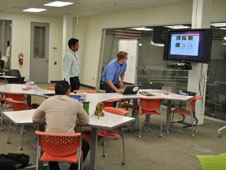
Collaborative work taking place in the sp.ace at Building 29 at Johnson Space Center.
Photo Credit: NASA JSC/ Christopher Gerty
Organizations like SpaceX have open, flat work environments designed to reflect their flat organizational structure. Fuji Xerox
has rooms in Europe and Japan that are designed to elicit certain types of thinking – a sort of “cognitive ergonomics,” a term used by researchers at large office furniture companies like Steelcase and Herman Miller. Companies from Google to Capital One have made open, transparent, collaborative work spaces available to their employees.
Work real estate is at a premium. Projects are increasingly interagency and international. Employees don’t always utilize an office—they’re getting the job done elsewhere. IBM, for example, has done away with office space for tens of thousands of its employees. Practices such as “hotelling,” where employees are given unassigned spaces in a work environment, are being used to meet the needs of nomadic workers. This way of working is making its way to government.
In December 2010, President Obama signed the Telework Enhancement Act “to improve teleworking in executive agencies by developing a telework program that allows employees to telework at least 20 percent of the hours worked in every two administrative work weeks, and for other purposes.” This June, executive agencies passed the first milestone of informing employees who meet the teleworking criteria that they are eligible for a new way to work. The next steps include acquiring technologies to allow for incorporation of telework into agency operations and policies in order to decrease real-estate costs. Collaborative workspaces allow organizations to optimize the use of their work real estate, and workspace is no longer defined by one function or set of walls. It becomes adaptable, flexible; anything the organization wants it or needs it to be.
The Sp.ace, the Sandbox, and Fab Labs
NASA is accustomed to collaboration on many levels. Collaborative spaces exist at Ames Research Center and the Jet Propulsion Laboratory, connected by hyperwalls—large multi-screen displays—to collaborate on projects such as high-resolution image analysis from Mars. The pixel resolution allows for scientists separated by nearly 400 miles to collaborate and plan out a rover’s path. The JSC sp.ace is a modest beginning to something that hopes to grow. It’s a place for people to congregate and spur imagination, creativity, and curiosity. But it’s only a start.
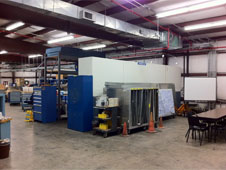
The “Sandbox” at Johnson Space Center.
Photo Credit: NASA JSC/ Christopher Gerty
Plans for another collaborative working space at JSC are afoot. The “Sandbox” will draw on the global success of the MIT Fabrication Laboratories (“Fab Labs”) which started gaining recognition in 2002. Fab Labs were founded on the premise of giving people tools to create things rather than consume them. The Sandbox, used to be warehouse that held old boxes of this and that and then acquired a variety of electronics, welding, and machining equipment in addition to an open meeting area. It is the hardware/prototyping equivalent of the sp.ace in Building 29 and will be virtually connected to other collaborative working spaces. As this new space evolves, a sort of collaborative space “cookbook” with information about standardizing connections (e.g., HDMI inputs), bandwidth requirements, audio and video connections and positioning, and power needs (e.g., easily accessible power strips) will be made available for others to create other collaborative spaces capable of connecting with established ones.
While the creation of collaborative spaces at JSC is continuing to evolve, the JSC “sp.ace” has already had success with a designated coworking week. Anyone from flight controllers, to administrative assistants, to project teams utilized the space to meet their needs or simply check it out. Throughout the week, as new faces trickled in and familiar ones returned for another visit, it was apparent that an entirely different wave of information and knowledge sharing driven by increased technological capability is upon us. Traditional offices aren’t supporting workforces like they have in the past, and organizations are starting to adapt.
The “sp.ace.” inside one of the high bays of Building 29 overlooking the former home of the Weightless Environment Training Facility (WETF) is a work area available to everyone at the center.
Featured Photo Credit: NASA



